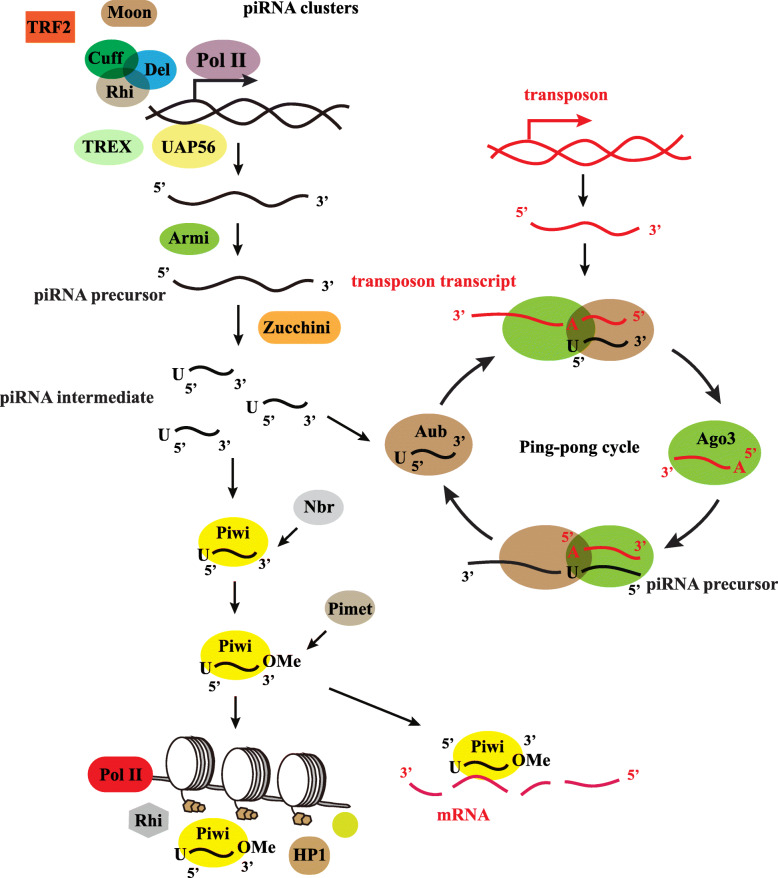Fig. 2.
piRNA biogenesis in Drosophila. piRNAs are transcribed from piRNA clusters as a single-stranded transcript. RNA Pol II and the Rhino-Cutoff-Deadlock (RDC) complex are recruited to the piRNA cluster, and Moon facilitates the initiation of transcription and inhibits the H3K9me3 mark by interacting with the RDC complex and TRF2. TREX prevents the nascent RNA and DNA from forming the R-loop with UAP56 to suppress the splicing of piRNA precursors. After piRNA transcription, the single-stranded transcript is exported to the cytoplasm and the secondary structure is resolved by the RNA helicase Armitage. Then MitoPLD/Zucchini cleaves the piRNA precursor into piRNA intermediates. The pre-mature piRNAs are loaded into the Piwi protein and trimmed by Nibbler at the 3′ end. The newly formed 3′ terminal end is methylated by DmHen1/Pimet methyltransferase and the 2′-O-methylate is added to the 3′ end of piRNAs to produce the mature Piwi-piRNA complexes. The Piwi-piRNA complexes can degrade mRNA directly or recruit HP1a, Su (var)3–9 and H3K9me2/H3K9me3 to the genomic site to silence the activity of RNA polymerase II. The Aub-piRNA complex can trigger the ping-pong cycle in cytoplasm together with Ago3 to produce secondary piRNAs. In the ping-pong cycle, Ago3 combines with sense transposon transcripts and acts via sequence complementarity to match with antisense transposon transcripts. After several cycles, the Aub-piRNA complex consumes the sense transposon transcripts to silence transposons in germline cells

